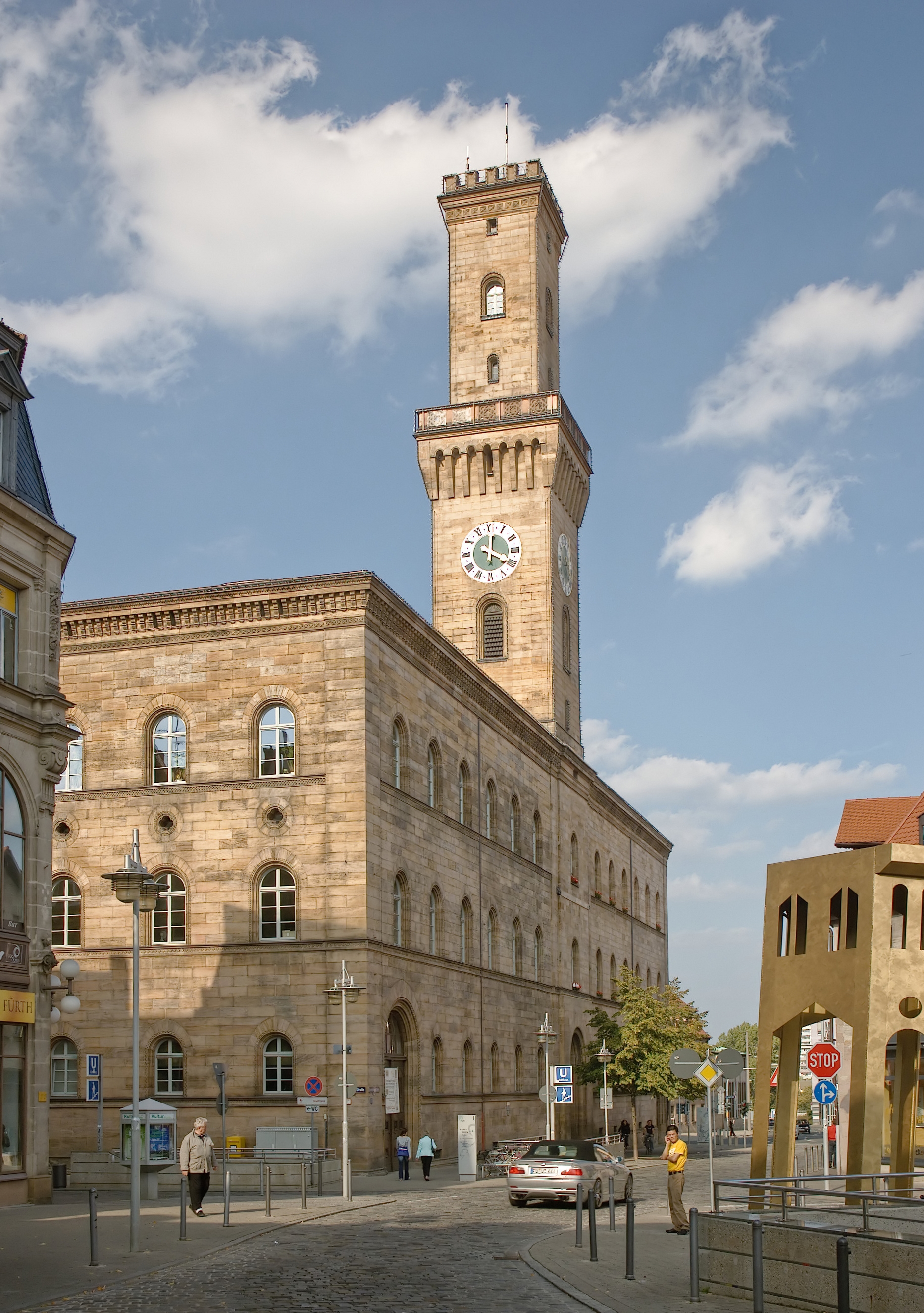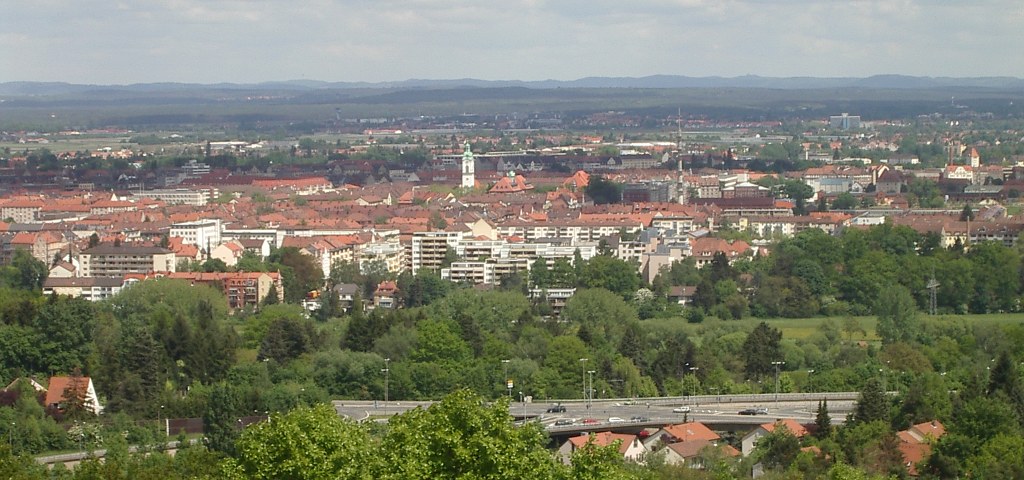|
Cadolzburg
Cadolzburg (outdated also ''Kadolzburg'', colloquially pronounced "Kalschbuʳch" or "Sporch" ) is a municipality in the Middle Franconian district of Fürth, in Bavaria, Germany. It is situated west of Fürth. Its name derives from its central castle, first being mentioned in the year 1157. Geography The topography varies significantly in its height. Neighborhood Neighboring Municipalities are: (beginning in the north then going clockwise) * Veitsbronn * Seukendorf * Fürth * Zirndorf * Ammerndorf * Großhabersdorf * Langenzen Districts Cadolzburg consists of the city itself and 15 farther districts: History Middle Ages The place was first mentioned in 1157 when the reeve of Kadolzburg, Helmericus de Kadoldesburc, agreed on a territorial exchange between the diocese of Würzburg the Heilsbronn Abbey. So the name derives from ''Burg des Kadold'' meaning "Kadold's castle". If the castle had been built by Duke Kadold, who in the year 793 founded the Herrieden Abbe ... [...More Info...] [...Related Items...] OR: [Wikipedia] [Google] [Baidu] |
Frederick I, Elector Of Brandenburg
Frederick (Middle High German: ''Friderich'''','' Standard German: ''Friedrich''; 21 September 1371 – 20 September 1440) was the last Burgrave of Nuremberg from 1397 to 1427 (as Frederick VI), Margrave of Brandenburg-Ansbach from 1398, Margrave of Brandenburg-Kulmbach from 1420, and Elector of Brandenburg (as Frederick I) from 1415 until his death. He became the first member of the House of Hohenzollern to rule the Margraviate of Brandenburg. Biography Frederick was born in Nuremberg, the second-born son of Burgrave Frederick V (1333–1398) and the Wettin princess Elisabeth of Meissen. He entered early into the service of his brother-in-law, the Habsburg duke Albert III of Austria. After Albert's death in 1395, he fought on the side of the Luxembourg king Sigismund of Hungary against invading Ottoman forces. He and his elder brother John, husband of Sigismund's sister Margaret of Bohemia, fought in the 1396 Battle of Nicopolis where they suffered a disast ... [...More Info...] [...Related Items...] OR: [Wikipedia] [Google] [Baidu] |
Langenzenn
Langenzenn is a town in the district of Fürth, in Bavaria, Germany. It is situated 15 km west of Fürth. The town lies on the river Zenn and has a population of 10.339 people (31. December 2012). Geography It belongs to the district of Fürth near Nürnberg and lies in the Rangau. Neighbouring Towns: *Wilhermsdorf (6,3 km) *Großhabersdorf * Cadolzburg (7,36 km) *Veitsbronn (6,29 km) * Puschendorf (4,41 km) *Emskirchen (8,19 km) * Hagenbüchach (4,41 km) History First possible historic mention in 903 by king Ludwig IV as "Zenna". It is not proven, that "Zenna" means Langenzenn here or the abandoned village "Zennhausen" near Neuhof an der Zenn. The first evident mention is in 954 when King Otto I. held an important meeting with the German nobles in Langenzenn to reunite them. Langenzenn got the rights and privileges of a town in 1360. Around that time the Halsgericht moved from Cadolzburg to Langenzenn. Thus, the town got the full j ... [...More Info...] [...Related Items...] OR: [Wikipedia] [Google] [Baidu] |
House Of Hohenzollern
The House of Hohenzollern (, also , german: Haus Hohenzollern, , ro, Casa de Hohenzollern) is a German royal (and from 1871 to 1918, imperial) dynasty whose members were variously princes, electors, kings and emperors of Hohenzollern, Brandenburg, Prussia, the German Empire, and Romania. The family came from the area around the town of Hechingen in Swabia during the late 11th century and took their name from Hohenzollern Castle. The first ancestors of the Hohenzollerns were mentioned in 1061. The Hohenzollern family split into two branches, the Catholic Swabian branch and the Protestant Franconian branch,''Genealogisches Handbuch des Adels, Fürstliche Häuser'' XIX. "Haus Hohenzollern". C.A. Starke Verlag, 2011, pp. 30–33. . which ruled the Burgraviate of Nuremberg and later became the Brandenburg-Prussian branch. The Swabian branch ruled the principalities of Hohenzollern-Hechingen and Hohenzollern-Sigmaringen until 1849, and also ruled Romania from 1866 to 1947. ... [...More Info...] [...Related Items...] OR: [Wikipedia] [Google] [Baidu] |
Burgraviate Of Nuremberg
The Burgraviate of Nuremberg (german: Burggrafschaft Nürnberg) was a state of the Holy Roman Empire from the early 12th to the late 15th centuries. As a burgraviate, it was a county seated in the town of Nuremberg; almost two centuries passed before the burgraviate lost power over the city, which became independent from 1219. Eventually, the burgraviate was partitioned to form Brandenburg-Ansbach and Brandenburg-Bayreuth. History Nuremberg was probably founded around the turn of the 11th century, according to the first documentary mention of the city in 1050, as the location of an Imperial castle between the East Franks and the Bavarian March of the Nordgau.Nürnberg, Reichsstadt: Politische und soziale Entwicklung (Political and Social Devel ... [...More Info...] [...Related Items...] OR: [Wikipedia] [Google] [Baidu] |
Fürth (district)
Fürth is a ''Landkreis'' (district) in Bavaria, Germany. It is bounded by (from the east and clockwise) the cities of Fürth and Nuremberg, and by the districts of Roth, Ansbach, Neustadt (Aisch)-Bad Windsheim and Erlangen-Höchstadt. History In the 13th and most of the 14th century the region was a regional centre of the Hohenzollern state. The Cadolzburg (a castle west of Nuremberg) was the seat of the local rulers. The present district was established in 1972. In 2003 the administrative seat was moved from Fürth to Zirndorf. (Nonetheless, Fürth remains the official capital of the district.) Geography The district is occupied by the western Nuremberg metropolitan area. Politics The district is part of the Fürth constituency for elections to the Bundestag, currently represented by Christian Schmidt. Coat of arms The coat of arms displays: * The eagle which is the heraldic bird of Brandenburg (in medieval times the region was a part of Brandenburg-Ansbach) * The red ... [...More Info...] [...Related Items...] OR: [Wikipedia] [Google] [Baidu] |
Fürth
Fürth (; East Franconian: ; yi, פיורדא, Fiurda) is a city in northern Bavaria, Germany, in the administrative division ('' Regierungsbezirk'') of Middle Franconia. It is now contiguous with the larger city of Nuremberg, the centres of the two cities being only apart. Fürth is one of 23 "major centres" in Bavaria. Fürth, Nuremberg, Erlangen and some smaller towns form the "Middle Franconian Conurbation", which is one of the 11 German metropolitan regions. Fürth celebrated its thousand year anniversary in 2007, its first mention being on 1 November 1007. Geography The historic centre of the town is to the east and south of the rivers Rednitz and Pegnitz, which join to form the Regnitz to the northwest of the Old Town. To the west of the town, on the far side of the Main-Danube Canal, is the Fürth municipal forest (''Fürther Stadtwald''). To the east of Fürth, at roughly the same latitude, lies Nuremberg, and to the north is the fertile market-gardening a ... [...More Info...] [...Related Items...] OR: [Wikipedia] [Google] [Baidu] |
Zirndorf
Zirndorf () is a town, which is part of the district of Fürth. It is located in northern Bavaria, Germany in the Regierungsbezirk of Middle Franconia. Neighbouring municipalities The following towns and municipalities share borders with Zirndorf; they are listed in clockwise order, starting in the north: * Fürth * Oberasbach * Stein * Roßtal * Ammerndorf * Cadolzburg History The first mention of the town occurs in a document dated 9 September 1297. The town was virtually destroyed during the Thirty Years' War, though the brewing industry established in the late seventeenth century helped in its recovery. In the mid-nineteenth century, the toy industry contributed to the town’s industrial development, and remains important today. Pinder Barracks In 1935 the city of Zirndorf applied to the German Reich Administration to have a caserne built here. The application was approved, with the condition of Reichsmarschall Hermann Göring, that construction must be in the Fran ... [...More Info...] [...Related Items...] OR: [Wikipedia] [Google] [Baidu] |
Mauterndorf
Mauterndorf (Southern Bavarian: ''Mautndorf'') is a market town of the Tamsweg District in the Austrian state of Salzburg. The municipality also comprises the Katastralgemeinden ''Faningberg, Neuseß'' and ''Steindorf''. Geography It is located in the centre of the Salzburg Lungau region, in the valley of the Southern Taurach River, a tributary of the Mur rising at the Radstädter Tauern Pass. In the north, the Niedere Tauern range forms a part of the main chain of the Alps. In the south, the Katschberg Roads via Sankt Michael leads to the Tauern Autobahn and the Katschberg Pass, crossing the Hohe Tauern range towards Carinthia. History The settlement arose from a Roman '' castra'' in the Noricum province, at the mountain road from Teurnia to the Radstädter Tauern Pass and Iuvavum (Salzburg). Mauterndorf was first mentioned in a 1002 deed, Mauterndorf Castle was acquired by the Salzburg archbishops in 1023, who set up a toll (''Maut'') station and ceded the inhabitants mar ... [...More Info...] [...Related Items...] OR: [Wikipedia] [Google] [Baidu] |
Le Palais-sur-Vienne
Le Palais-sur-Vienne (; oc, Lu Palaiç) is a commune in the Haute-Vienne department in the Nouvelle-Aquitaine region in west-central France. Population Inhabitants are known as ''Palaisiens'' in French. See also *Communes of the Haute-Vienne department The following is a list of the 195 communes of the Haute-Vienne department of France. The communes cooperate in the following intercommunalities (as of 2020):Communes of Haute-Vienne {{HauteVienne-geo-stub ... [...More Info...] [...Related Items...] OR: [Wikipedia] [Google] [Baidu] |
Free Voters Of Bavaria
The Free Voters of Bavaria (German: ''Freie Wähler Bayern'') is a conservative political party in Bavaria. It has served as part of the governing coalition there since the 2018 state election under the leading Christian Social Union. The term "Free Voters" is also applied to the various independent voter groups common in Bavarian municipal and district elections. The name ''Free Voters of Bavaria'' applies to both the Bavarian State Association of Free and Independent Voters (seat: Munich), an umbrella organization of Free Voter groups, as well as the Bavarian state chapter of the nationwide party Free Voters (German: Freie Wähler). The two groups exist simultaneously under the same name due to Bavarian election law not allowing umbrella organizations to run for office, thus the state party ''Free Voters of Bavaria'' was founded in 1997 in order to participate in the Bavarian state elections. Due to the party's origins as an organization of independents seeking alternatives ... [...More Info...] [...Related Items...] OR: [Wikipedia] [Google] [Baidu] |
Bündnis 90/Die Grünen
Alliance 90/The Greens (german: Bündnis 90/Die Grünen, ), often simply referred to as the Greens ( ), is a green political party in Germany. It was formed in 1993 as the merger of The Greens (formed in West Germany in 1980) and Alliance 90 (formed in East Germany in 1990). The Greens had itself merged with the East German Green Party after German reunification in 1990. Since January 2022, Ricarda Lang and Omid Nouripour have been co-leaders of the party. It currently holds 118 of the 736 seats in the Bundestag, having won 14.8% of votes cast in the 2021 federal election, and its parliamentary group is the third largest of six. Its parliamentary co-leaders are Britta Haßelmann and Katharina Dröge. The Greens have been part of the federal government during two periods: first as a junior partner to the Social Democrats (SPD) from 1998 to 2005, and again with the SPD and the FDP following the 2021 German federal election. In the incumbent Scholz cabinet, the Greens have fi ... [...More Info...] [...Related Items...] OR: [Wikipedia] [Google] [Baidu] |
Principality Of Ansbach
The Principality or Margraviate of (Brandenburg-)Ansbach (german: Fürstentum Ansbach or ) was a principality in the Holy Roman Empire centered on the Franconian city of Ansbach. The ruling Hohenzollern princes of the land were known as margraves, as their ancestors were margraves (so the principality was a margraviate but not a march). History The principality was established at the death of Frederick V, Burgrave of Nuremberg, on 21 January 1398, when his lands were partitioned between his two sons. The younger son, Frederick VI, received Ansbach and the elder, John III, received Bayreuth. After John III's death on 11 June 1420, the two principalities were reunited under Frederick VI, who had become Elector Frederick I of Brandenburg in 1415. Upon Frederick I's death on 21 September 1440, his territories were divided between his sons; John received the principality of Bayreuth (Brandenburg-Kulmbach), Frederick received Brandenburg, and Albert received Ansbach. Therea ... [...More Info...] [...Related Items...] OR: [Wikipedia] [Google] [Baidu] |





